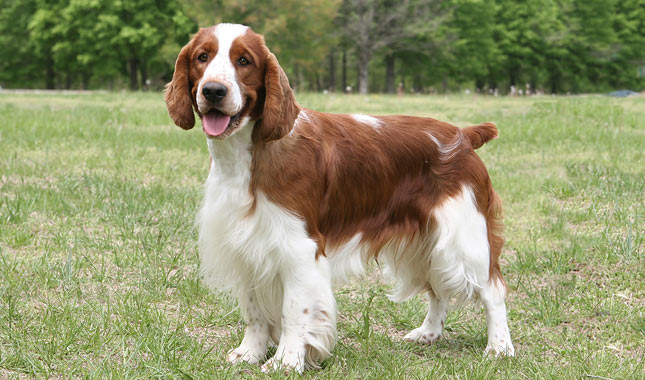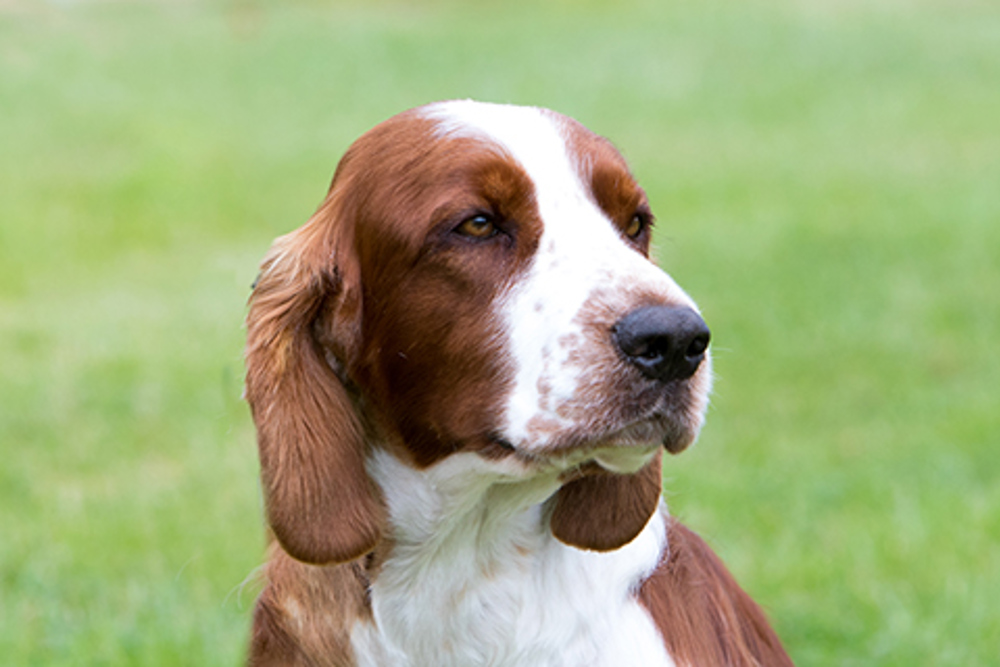
The Welsh Springer Spaniel (Cocker Cymreig) is an ancient gun dog breed from Wales, with roots dating back to at least the medieval period. It is believed to descend from the Land Spaniels described in Britain as early as the 16th century — a versatile group used to flush game birds into nets or later, to the gun.
By the 18th and 19th centuries, the Welsh Springer Spaniel had developed into a distinct breed, primarily in Glamorgan and other parts of South Wales. Its characteristic red and white coat, boundless energy, and keen nose made it a valued hunting companion.
The Welsh Springer was officially recognized as a separate breed by The Kennel Club (UK) in 1902, distinguishing it from its more widely known cousin, the English Springer Spaniel.
The breed enjoys steady, niche popularity among hunting enthusiasts and active families. While not as prevalent as other spaniels (like the English Springer or Cocker Spaniel), it is appreciated for:
• Versatile hunting and retrieving skills
• Steady, affectionate temperament
• Distinctive appearance
It remains most popular in the UK, the US, and parts of Europe, with dedicated breed clubs ensuring its preservation.
The Welsh Springer Spaniel is compact, athletic, and elegant, exuding both grace and stamina.
• Height: 17–19 inches (43–48 cm)
• Weight: 35–50 pounds (16–23 kg)
• Build: Medium-sized, slightly longer than tall, muscular, with a deep chest
• Coat: Straight or flat, soft, dense, moderately long with feathering on legs, ears, and chest
• Color: Always rich red and white (distinctive and breed-specific)
• Head: Refined, slightly domed skull with a square muzzle
• Ears: Set low, pendant-shaped, with soft feathering
• Eyes: Medium-sized, oval, dark to hazel, kind expression
• Tail: Traditionally docked in working lines (natural in countries where docking is banned); carried horizontally and lively
Known for cheerful, affectionate, and steady personalities, Welsh Springers are enthusiastic both in the field and at home.
• Friendly and affectionate: Loyal to family, reserved with strangers
• Energetic: Loves outdoor activities, needs regular exercise
• Intelligent and trainable: Responds well to positive reinforcement
• Velcro dog: Strong attachment to their owners; dislikes being left alone for long periods
• Alert: Makes a good watchdog, though not aggressive

This breed is ideal for:
• Hunters needing a versatile flushing and retrieving companion
• Active families who enjoy hiking, running, and outdoor adventures
• Owners seeking a devoted, yet manageable medium-sized dog
It may not suit:
• Sedentary or inactive households
• Owners who leave dogs alone frequently (prone to separation anxiety)
• Those preferring low-maintenance grooming
Welsh Springers flourish with consistent exercise, mental stimulation, and close companionship.
• Exercise: High; daily walks, play sessions, and occasional fieldwork or dog sports (agility, obedience)
• Training: Positive, reward-based methods with early socialization
• Grooming: Moderate; brushing 2–3 times weekly, occasional trimming around feet and ears
• Living Environment: Adaptable to home or apartment if exercise needs are met; prefers fenced yard
• Feeding: Balanced diet formulated for medium, active breeds
Welsh Springer Spaniels are generally healthy, with a lifespan of 12 to 15 years. Potential issues to watch for include:
• Hip dysplasia
• Elbow dysplasia
• Eye conditions (glaucoma, entropion, cataracts)
• Ear infections (due to pendant ears; regular cleaning recommended)
Reputable breeders screen for hereditary issues to promote sound health.

• English Springer Spaniel: Larger, more heavily built, broader color variety
• Brittany Spaniel: Lighter, shorter coat, more independent
• Cocker Spaniel: Smaller, heavier feathering, more popular as companion
If you’re looking for a devoted, energetic, and enduring companion who thrives on activity and close family bonds, the Welsh Springer Spaniel may be a perfect match.
Seek breeders affiliated with national breed clubs, such as the Welsh Springer Spaniel Club of America or The Welsh Springer Spaniel Club (UK). United Pet Club offers services like microchipping, activity tracking, and pet passports for traveling owners.